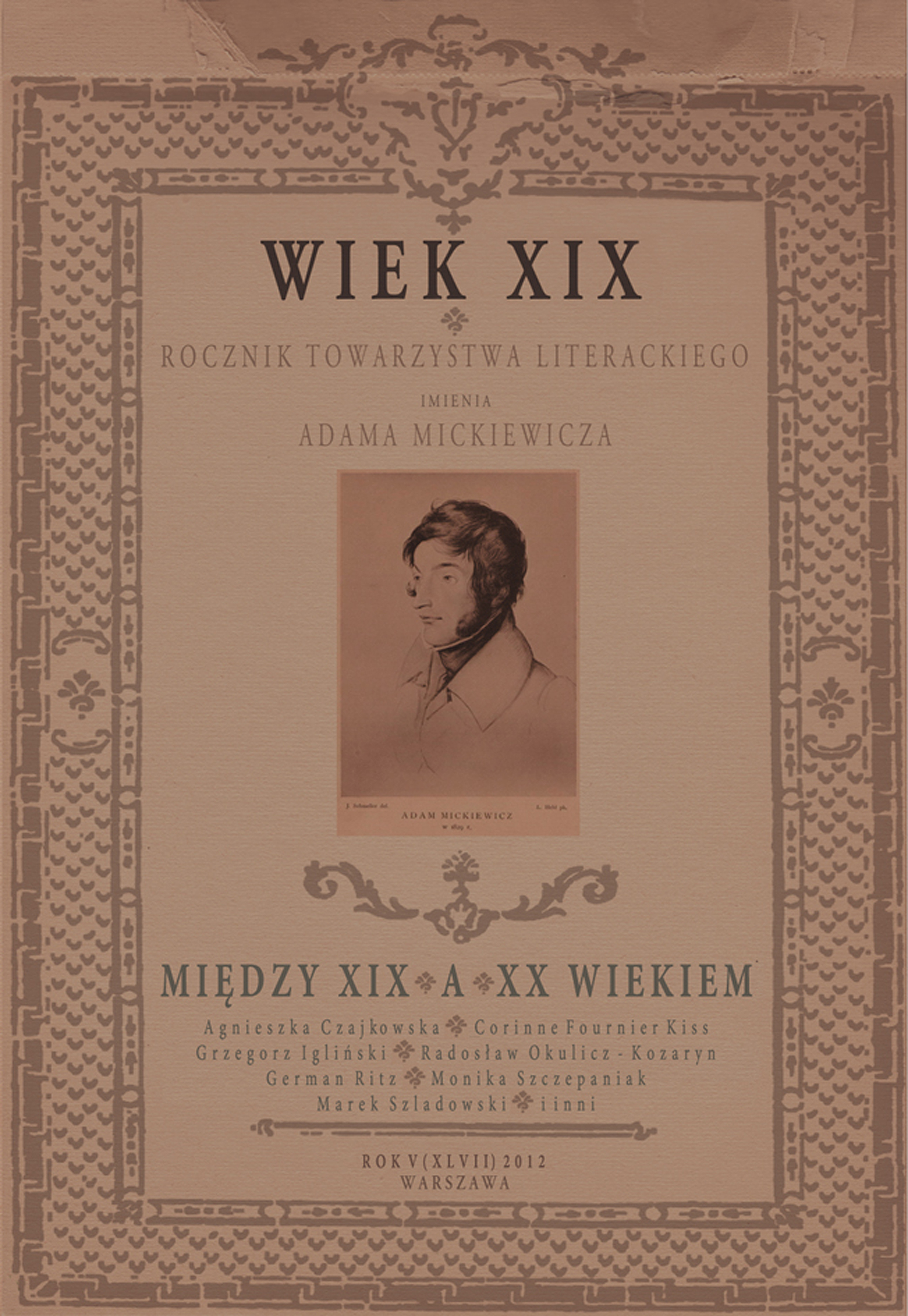Cyprian Kamil Norwid i Gérard de Nerval wobec średniowiecznej recepcji postaci Orfeusza
Cyprian Kamil Norwid and Gérard de Nerval Facing the Mediaeval Reception of Orpheus
Author(s): Magdalena KowalskaSubject(s): Language and Literature Studies, Studies of Literature, Comparative Study of Literature
Published by: Towarzystwo Literackie im. Adama Mickiewicza
Keywords: Gérard de Nerval; Cyprian Kamil Norwid; Orpheus and Eurydice; the Middle Ages; courtly love; loneliness; lira; lute; suffering; the South
Summary/Abstract: The article discusses the reception of the figure of Orpheus in the mediaeval courtly culture, taking the ballad "King Orfeo" and the story "Sir Orfeo" as examples. The main character, a potentate and lord of his castle, having raped his beloved one, leaves his aristocratic milieu and turns into an eremite living in a primeval forest. For this reason, even though he would be lucky enough to find his Eurydice, he remains unworthy of her, given the hierarchy of the mediaeval society, and may lose her again due to the conventionalities. Set against this background is a comparative analysis of Gérard de Nerval’s "El Desdichado" (1853) and Cyprian Kamil Norwid’s "Beatrix" (1860). The characters, lonely and inconsolable, naming themselves Orpheus, in an associative course of idyllic reminiscences and reproaches made to their beloved ones, discover their own poetic ‘I’ and form their own value and greatness through a truly infernal effort. Nerval’s character would remain torn and uncertain throughout, shaping his artistic universe in line with this fluid pattern; Norwid’s Orpheus will, in turn, get enraptured by the Divine perspective he was offered thanks to having cognised the secret of suffering.
Journal: Wiek XIX. Rocznik Towarzystwa Literackiego im. Adama Mickiewicza
- Issue Year: XLVII/2012
- Issue No: 1
- Page Range: 239-257
- Page Count: 19
- Language: Polish

